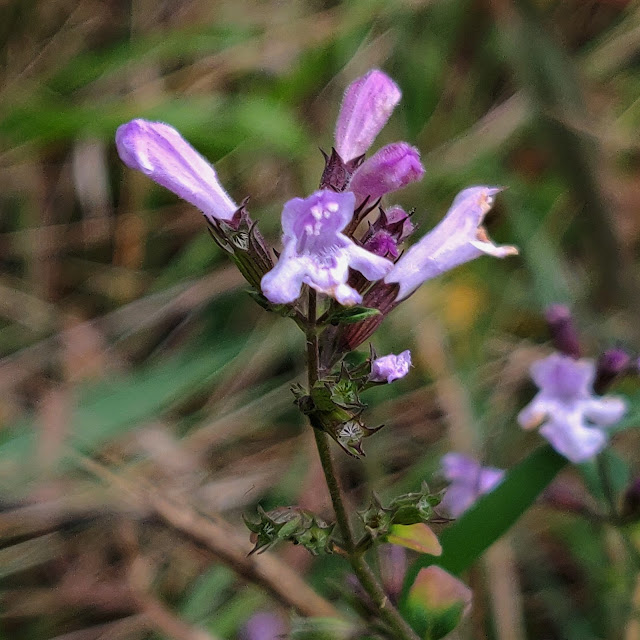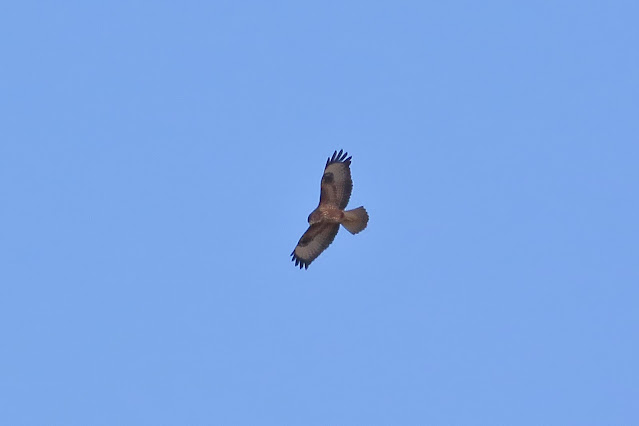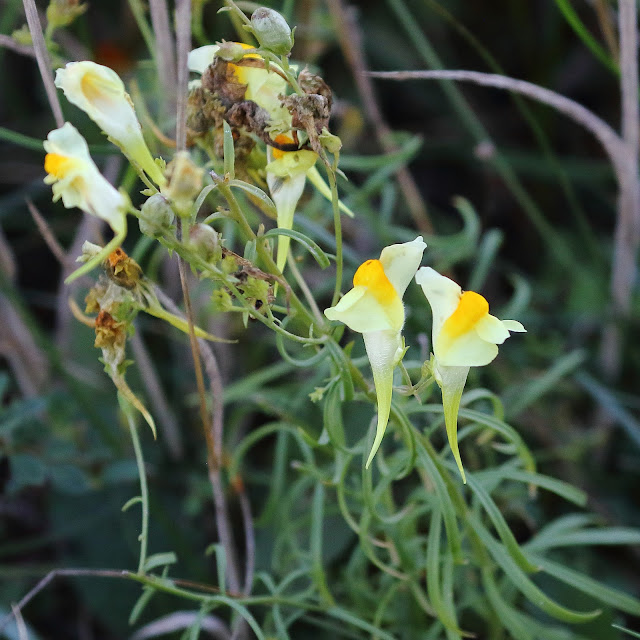September 2022
Amphibians and Reptiles
No sightings this month.
Birds
A quieter month in
terms of reports, with a total of 46 species seen or heard, from a total of 158
records. September is a strange month in many ways, often feeling like summer
and autumn at the same time. Summer visitors like House Martin and Swallow were
still around early on, gathering in large flocks ready to depart south, just as
the first winter visitors, like Redwing, were starting to be seen towards the month’s
end.
Large flocks of around
100 House Martin were seen both on the LSA (blog
link) and over GP early in the month, with the last report coming on
11th. Small numbers of Swallow (up to 12) were also spotted around the
village, the last report being 25th along the ORC.
A Redwing was
seen in a Cambridge Rd garden, unusually early on 25th (blog
link). Our village bird records going back 10-12 years, indicate first Redwing
sightings are usually between 7th and 22nd October, two to four weeks later
than this year! Apparently the unusually strong northerlies blew some birds
over the North Sea into East Anglia early this year.
An impressive ten Yellow
Wagtail were seen amongst a flock of around sixty Pied Wagtail on
the GP cricket field (11th), and a Grey Wagtail was seen flying over
Lewis Crescent (8th). A group of around forty Pied Wagtail were also
seen on the recreation ground (4th), as well as on LSA.
A Kingfisher
was again reported along the river near the recreation ground (6th), and there
were a several sightings of Little Egret along the river and, perhaps
less expected, over Grange Farm.
The Little Grebe
juvenile was again spotted on the GP lake (11th), as were Greylag and Canada
Goose, Mallard and a Grey Heron. A single Meadow Pipit
was also seen flying over.
Large mixed flocks of ~100
Blacked-headed, Herring and Lesser Black-backed Gull were
also seen feeding in the freshly ploughed fields around Grange Farm, with a few
Great Black-backed Gull seen along the Roman Rd.
Two Blackcap
and a Chiffchaff were spotted along the ORC and the Roman Road, quietly
feeding with the larger mixed Tit flocks now starting to appear, mostly Great
Tit and Blue Tit, but including Long-tailed and Coal Tit.
Flocks of around 40 Starling have been seen gathering on the LSA, and House
Sparrow were often seen and heard in Lewis Cres.
After an apparent
absence, Blackbird are returning to gardens, as are flock of Goldfinch
now including juvenile birds, and a few Greenfinch and Chaffinch.
As well as the more usual Great Spotted Woodpecker, a Green
Woodpecker also put in an appearance in two gardens. Robin have been
heard singing again, as pairs split up after breeding and both male and female
birds sing to advertise their winter feeding territories. A Song Thrush was also spotted along
the ORC.
One or two Buzzard
were regularly seen at several sites, as were 1-2 Red Kite often seen
flying quite low in search of carrion. There were also four sightings of Sparrowhawk
hunting in gardens, including two of male birds, and a Tawny Owl was heard
calling from a wood near the village centre on 11th. No sightings of Kestrel
this month.
A family group of five
Magpie was seen ‘playing’ near the village centre, along with several
sightings elsewhere. There were reports of Wren, Jay, Dunnock and
Collared Dove, and Red-legged Partridge were seen along the Roman Road
and near Grange Farm.
Butterflies and other insects
As summer draws to a
close, the number of butterflies seen has dropped off considerably, with a
total of 14 different species reported in the 32 records received: butterflies 23,
bees 5, others 4.
Butterflies: A Clouded
Yellow was seen for the first time this year, along the Roman Road on 4th (blog
link), and a Brown Argus was also seen once, again along the
Roman Road.
The mostly commonly reported
species, making up almost two-thirds of reports, was the Small White. Additionally,
there were two reports of Large White, and single reports each of Brimstone
(4th), Common Blue (4th, blog
link), Speckled Wood (10th), Holly Blue (22nd) and Small
Tortoiseshell (29th).
Other: Hummingbird Hawkmoth was spotted on two occasions early in the
month, both Buff-tailed and White-tailed Bumblebee were seen (4
reports in total), and a Hornet and an unidentified ‘ground-nesting’ bee
were also reported.
Mammals
Bat – regularly
seen over a garden on Cambridge Road.
Fox – one seen
on the LSA jumping into a stable over the door.
Muntjac – one
in a Cambridge Rd garden on 7th and 22nd, and one spotted dead alongside A1307.
Flora
Whilst an abundance of
berries could be seen along the hedgerows this month (blog
link), there were relatively few reports of specific flowers: Hawksweed Oxtongue, Toadflax, Sickle Medick, Spear Thistle, Creeping Thistle - largely seen along the Old Railway Cutting.
Rivercare
After many years as
Rivercare lead for ANW, Peter Brunning will be stepping down from the role, and ANW would like to take this opportunity to thank Peter for all he has contributed to the group over the years. We would also very much like to welcome Nancy
Ockendon who has volunteered to take on the Rivercare role, and has joined the ANW
Project Team.
Nancy recently
attended the training course, run by Ian Hawkins from the Riverfly group, to
learn about monitoring and habitat improvement for aquatic invertebrates, and pollution
monitoring, as well as the sampling techniques and identification of the main groups
of invertebrates. Moving forward, Nancy will take the lead in organising the
river sampling team for ANW.
The river levels have recently
been very low, and it was not possible to undertake any meaningful river
sampling this month, but Nancy is hoping to fit in one last sampling before the
winter.
Weather
The total rainfall was 35.5 mm this month,
which is an improvement compared to the previous three months, but is still
below the average but very welcome. The highest temperature was 31.5 degrees C on
the 2nd and the lowest was 2 degrees C on the 29th. Winds were predominantly in
a north-east direction.
Many thanks to all those who contributed
reports of their sightings for September 2022:
Peter
Brunning, David Farrant, Gaynor Farrant, Carole McCrae, Andy Merryweather,
Polly Merryweather, Nancy Ockendon, Gareth Rees, Gill Smith, Derek Turnidge, Maggie
and John Turner.




























